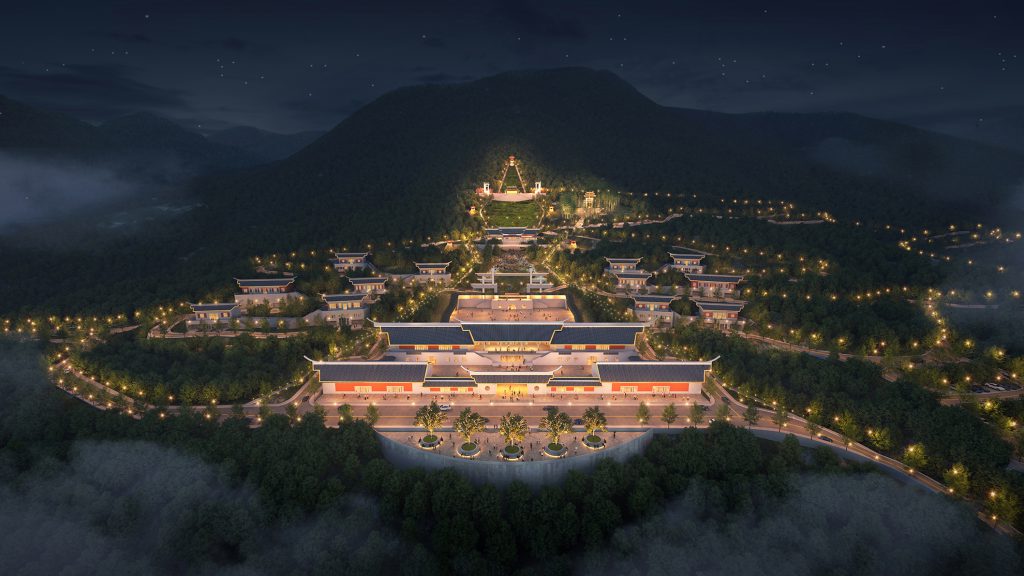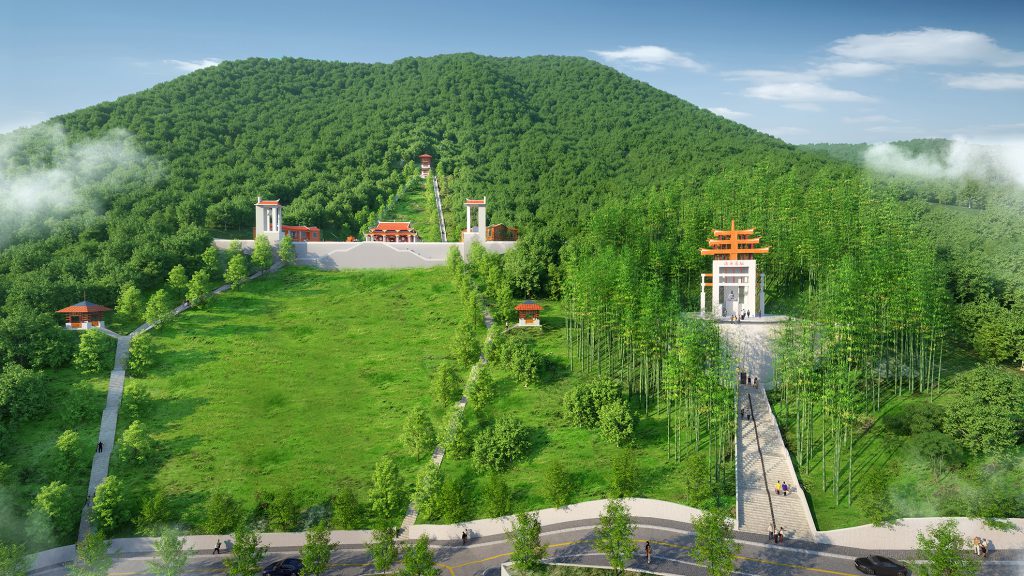Client
永春仙硿岩
Completion
整体规划方案设计
Land Area
22.9 Ha
Project Type
Cultural and Recreational
GFA
12,060m2
Site Area
22.9 Ha
History and background
Pu Zu’s Birthplace and History Cultural Park (普足故里慈济文化园) is located on a hill in Hushan (岵山镇), a town in Yongchun County (永春县) in the Southeastern region of China. It was designed to be a prominent cultural complex built in honour of the Chinese folk deity Qing Shui Zu Shi (清水祖师).
Named Chen Zhaoyin (陳昭應) at birth, Qing Shui Zu Shi was born in 1047 AD in the town of Hushan during the Song Dynasty. He became a Buddhist monk at a young age and was given the Dharma name “Pu Zu” (法号:普足). Pu Zu was renowned for his abilities to pray for rain during droughts (祈雨), build bridges, and formulate herbal medicines to cure the illnesses of many. Out of reverence, the local villagers built shrines to worship him.
Qing Shui Zu Shi is widely revered in mainland southern China, and also in Taiwan and across Southeast Asia. Although he was born in Hushan, he is best known for his contributions to Anxi (安溪), an adjoining county to Yongchun. This project was commissioned to recognise and pay tribute to the birthplace, learning, and practice of Qing Shui Zu Shi.
Inspiration for the plan
The planning of the cultural park was inspired by traditional Chinese landscape paintings (山水画). The buildings were designed to integrate with the naturally hilly terrain surrounding them. Sitting midway up the mountain, the mountain peak to the north and the mountain ranges on both the eastern and western fronts creates an enclosure around the town. When viewed from Hushan Town, the complex is envisioned as a picturesque real-life Chinese landscape painting, with a central water body cascading down the hills.
Site Planning and Architecture
In response to its site context, the entire complex was planned to embrace the existing hilly terrain through careful planning or roads and driveways to minimise terrain cutting while still reflecting the vernacular courtyard typology in traditional residential layouts for better ventilation and daylighting. To establish a visual connection with Hushan Town, the complex was designed with its building entrance, balcony, and views on intermediate platforms. All the individual buildings are accessible by driveways and designed with their own car parks for ease of access.
The architectural expressions reflect modern interpretations of the vernacular style unique to Yongchun County. This style is characterised by long and low building elevations with warm, grey tiled roofs, accompanied by red accents on the white building walls. These elements distinguish itself from other architectural styles of the southern Fujian province.
Landmark
Buildings within the complex are arranged in hierarchical order down the hill. The highest building, located above mid-hill is the Sky Observation Pavilion (观天台), located lower is the existing temple complex (仙硿岩), followed by the Shrine of Qing Shui Zu Shi (清水灵坛). The shrine is located there as it was where a monk from the temple spotted a cloud-like silhouette of Qing Shui Zu Shi appearing after rain at night. Further down the hill is the Ancestor Hall (宗祖堂) and at the base of the hill is an open plaza for worship and events, a Cultural Center (清水文化展馆)to showcase the history of Qing Shui Zu Shi. Also within the complex are commercial shops, a tourist center, offices, and an entrance plaza, while a few amenities are arranged on both sides used as learning, treatment centers, and lodging.
Bridging history and culture
Upon completion, the project is envisaged to be a cultural complex depicting the life and stories of Qing Shui Zu Shi. Due to its cultural significance, the complex is set to be an attraction for tourists and followers of Qing Shui Zu Shi. The complex will also serve as a recreational park for local residents providing them a place to carry out leisure activities promoting a healthy lifestyle.
Rooted in the foundation of Qing Shui Zu Shi culture (祖师文化), the project seeks to deepen understanding of Zu Shi history and culture, and beliefs to visitors and residents. The complex plans to alleviate the status of the local culture and ecology while benefiting the well-being of the local community.




